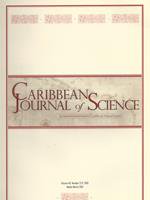In the Luquillo Experimental Forest (LEF) of Puerto Rico, composition of terrestrial gastropod assemblages exhibits little temporal variation, even in response to intense hurricanes. One might therefore expect snail assemblages to be equilibrial and structured by interspecific interactions such as competition. If competition is strong and persistent throughout an assemblage, then it should manifest as density compensation (a negative correlation in population density between competitors) and be most pronounced for species pairs that are morphologically similar, as they should compete most strongly for resources. We assessed the degree to which terrestrial snails in the LEF exhibit density compensation, from both spatial and temporal perspectives. In general, density compensation was weak, especially from a spatial perspective. Moreover, the degree of density compensation was not significantly associated with dissimilarity in body size or shell shape. These results suggest that external factors such as predation or disturbance probably maintain population densities at low enough levels that the effects of interspecific competition do not become intense or persistent enough to mold patterns of assemblage structure for terrestrial snails.
How to translate text using browser tools
1 January 2010
Density compensation suggests interspecific competition is weak among terrestrial snails in tabonuco forest of Puerto Rico
Christopher P. Bloch,
Michael R. Willig
ACCESS THE FULL ARTICLE

Caribbean Journal of Science
Vol. 46 • No. 2–3
2010
Vol. 46 • No. 2–3
2010
body size
community structure
Gastropoda
interspecific competition




